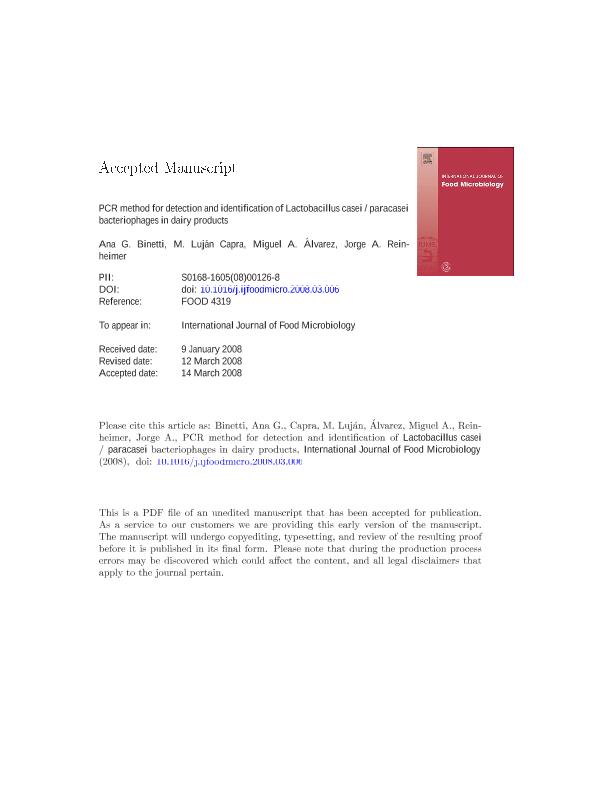Artículo
PCR method for detection and identification of Lactobacillus casei/paracasei bacteriophages in dairy products
Fecha de publicación:
05/2008
Editorial:
Elsevier Science
Revista:
International Journal of Food Microbiology
ISSN:
0168-1605
Idioma:
Inglés
Tipo de recurso:
Artículo publicado
Clasificación temática:
Resumen
Bacteriophage infections of starter lactic acid bacteria (LAB) pose a serious risk to the dairy industry. Nowadays, the expanding use of valuable Lactobacillus strains as probiotic starters determines an increase in the frequency of specific bacteriophage infections in dairy plants. This work describes a simple and rapid Polymerase Chain Reaction (PCR) method that detects and identifies bacteriophages infecting Lactobacillus casei/paracasei, the main bacterial species used as probiotic. Based on a highly conserved region of the NTP-binding genes belonging to the replication module of L. casei phages φA2 and φAT3 (the only two whose genomes are completely sequenced), a pair of primers was designed to generate a specific fragment. Furthermore, this PCR detection method proved to be a useful tool for monitoring and identifying L. casei/paracasei phages in industrial samples since specific PCR signals were obtained from phage contaminated milk (detection limit: 104 PFU/mL milk) and other commercial samples (fermented milks and cheese whey) that include L. casei/paracasei as probiotic starter (detection limit: 106 PFU/mL fermented milk). Since this method can detect the above phages in industrial samples and can be easily incorporated into dairy industry routines, it might be readily used to earmark contaminated milk for use in processes that do not involve susceptible starter organisms, or processes which involve phage-deactivating conditions.
Archivos asociados
Licencia
Identificadores
Colecciones
Articulos(INLAIN)
Articulos de INST.DE LACTOLOGIA INDUSTRIAL
Articulos de INST.DE LACTOLOGIA INDUSTRIAL
Citación
Binetti, Ana Griselda; Capra, María Luján; Alvarez, Miguel; Reinheimer, Jorge Alberto; PCR method for detection and identification of Lactobacillus casei/paracasei bacteriophages in dairy products; Elsevier Science; International Journal of Food Microbiology; 124; 2; 5-2008; 147-153
Compartir
Altmétricas




